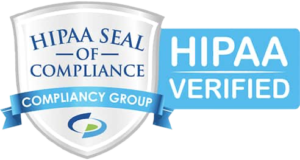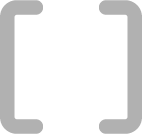Virtually every business considers email a precious commodity today. End-users expect ease of use at little cost. Despite these expectations, many are unaware that email systems are inherently weak regarding email security.
While each platform has safeguards, many of those protections are (based on scores of examples) relatively ineffective against advanced cyberattacks. The increasing barrage of ransomware points to the overall apathy most end-users have towards incoming messages. Human errors and ignorance regarding email messages remain the biggest threats to business security.
According to Verizon’s 2020 Data Breach Investigations Report, one-fourth of data breaches involved phishing. These numbers were likely boosted by the pandemic, which saw attacks rise nearly 600% during the past year. Add into the mix that the average data breach can cost organizations upwards of $8 million, and you’ve got a big problem.
The systems touting their bulletproof protection often become the first targets. End-user misperceptions also encourage cybercriminals to exploit the defenses of these platforms, exposing corporate and personal data and jeopardizing their compliance with regulations and industry standards.
Additional Protection Levels Should No Longer be Optional
The top email provider, Microsoft 365, sits squarely in the crosshairs of many malicious actors. As more businesses adopt global cloud platforms, cybercriminals will amp up the attacks on those applications to gain the most financial rewards for their efforts. Hackers will focus wherever they’ll get the most return on their investments, and for business email, M365 is by far the top target.
The reality is multifunctional platforms will always require supplemental protection. Most businesses expect comprehensive coverage from companies with deep-pockets but, more often than not, end up with their data or networks accessible by cybercriminals.
Selecting ‘off the shelf’ or ‘cloud suites’ with security protections is a positive first step. However, hackers have access to the same options and APIs as developers, making those platforms easier to infiltrate for those with the right (or wrong) skills.
Closing the Gap
General security practices tell us any potential point of failure should have at least two defense layers – and that same standard applies to Microsoft 365. MSPs must take on the responsibility of protecting and educating their clients on all the vulnerabilities and latest email threats, including those they believe are already being addressed by Fortune 500 cloud suppliers.
That task includes adding layers. Boosting protection for various aspects of these platforms may not stop every attack, but it prevents your clients from being the “low hanging fruit” cybercriminals are after. Those layers could include:
Inbound and Outbound Filtering
It is essential to add a solution that stops certain information from entering or leaving your clients’ systems. While Microsoft 365 offers basic filtering options, end-users often report receiving a high amount of spam and false-positives. Complicating the matter is most cannot easily find blocked messages, which can create a log jam and more support requests for your MSP tech team. No one wants to miss essential emails concerning business transactions or upcoming deadlines, especially if they never realize those messages could be missing. Upgrading to a higher-level filtering system allows your clients to properly sifting through spam, viruses, phishing, and other issues.
Consider upgrading to Mailprotector’s CloudFilter, which not only lets users review potentially harmful content but handles messages more intelligently to reduce false-positives. Your clients can also create incoming and outgoing mail policies to prevent sensitive information from leaving the work environment. MS 365 is not naturally intuitive in that area. Still, the addition of CloudFilter makes it easier for end-users to understand security details in messages and improves the visibility of quarantined messages.
Email Encryption
A common misconception about email is that these systems are inherently secure. They assume the people they are sending messages to will be the only ones receiving that information.
In real life, human errors create a lot of problems, including sending sensitive information to the wrong party (imagine the accountant sending a copy of the company’s tax forms to a key client). Even without senders making mistakes, malicious actors can still intercept their messages. There is no better way to secure data in transit than with encryption.
Mailprotector’s Bracket email security service is not only a perfect example of a layered security option, but a user-friendly solution to ensure everyone uses it across the board. Unauthorized individuals won’t have access to employees’ files or text in any email messages, thanks to AES256 encryption and two-factor authentication. All a user needs to do is wrap the subject line in brackets “[ ]” – no logins, plugins, software, or apps to download. This standalone encryption solution can be used to bolster Microsoft 365 without changing MX records, and the set up is entirely automated. But keep in mind, Office 365 email encryption is not good enough.
Of course, filtering and encryption are not the only ways MSPs can secure end-users’ messages. Archiving and backup ensure employees can quickly locate email conversations and keep everyone working when their systems go down.
Above and Beyond
Microsoft 365 is widely used for many reasons today. However, popularity doesn’t mean these platforms are totally foolproof or secure. Layering solutions on top of standard email solutions is essential in the current threat landscape.
With distributed workforces and rising cybersecurity threats, this approach is not only business-critical, but a great way to increase profits for your MSP. These applications can increase Monthly Recurring Revenue (MRR) while giving your clients the protection they need and deserve.
When security becomes an issue, MSPs often get the blame, even when employees are at fault. Avoid that debacle by delivering the best email protection possible.


















